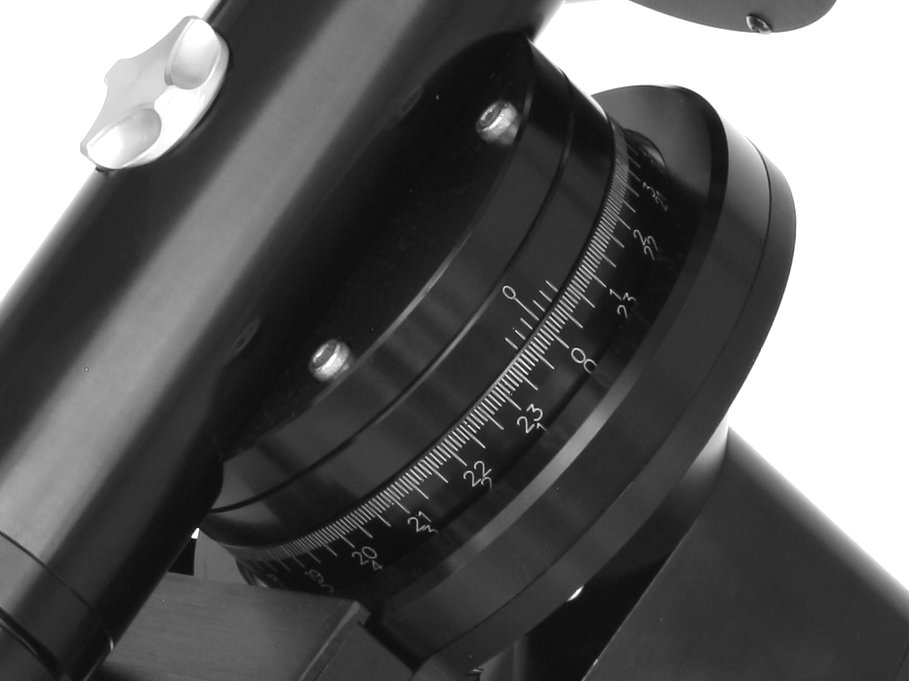I had this rebuild done before my stroke. Among the options I splurged on were digital setting circles. If you have no idea what analog setting circles are, a brief introduction. Every object in the sky has a position analogous to latitude and longitude on Earth. Instead of latitude, declination from 90o N (roughly Polaris, the northern pole star) to 90o S. Right ascension (RA) is the longitude equivalent, measured from where the Sun crosses the celestial equator at the vernal equinox. Analog setting circles were pretty, usually aluminum cylinders with markings that you would use to aim your telescope at a particular declination and RA (measured in hours and minutes). Because they had to be produced with a dividing head, they were expensive, and seldom finer than about 5' in RA or 1o on consumer grade telescope mounts. Here's a picture from my favorite telescope mount maker, Losmandy.
Some years ago, as electronics became cheap, some clever people grabbed the 1 in 4096, then 1 in 8192 optical encoders to build the digital equivalents. These attach to the declination and right ascension axes of an equatorial mount. Once you have sighted in two or three stars and pressed ENTER, the display shows you your current RA and declination. Positioning to your perhaps faint target is now possible. (We call deep sky objects like galaxies and many of the other items whose distances are measured in light-years, instead of millions of miles, "faint fuzzies," although not all are really that faint). Just a bit more math and these work on Dobsonian, alt-azimuth mounts, too.
I have used these on my equatorial mounts with good results. Because the rebuilt scope arrived just before my stroke, I had never actually used the DSCs. Tonight I stayed up well past my normal bedtime, rolled it out and used Polaris and Vega for my two alignment stars, I told it to show me M13, the Hercules globular cluster. Just on the edge of my field of view. Then M57, the Ring Nebula (a smoke ring of incredible size). And there it was.
Some of these targets can be found by hopping from bright star to fainter and so on as well. M57 is about 40% of the way between the the two most southernmost stars of Lyra, and M13 is a bit more than halfway between two stars in the Hercules quadrilateral. This is much easier and for some objects (like the Whirlpool Galaxy) I have never found star hopping adequate.
At least part of why both M13 and M57 were on the edge of my field of view is that I used a very wide field eyepiece to center my alignment stars. Tomorrow night, I will center them at 154x.
Conservative. Idaho. Software engineer. Historian. Trying to prevent Idiocracy from becoming a documentary.
Email complaints/requests about copyright infringement to clayton @ claytoncramer.com. Reminder: the last copyright troll that bothered me went bankrupt.
Sunday, May 28, 2017
Happy to Report the Digital Setting Circles (DSCs) on the Big Scope Was a Worthwhile Purchase
Subscribe to:
Post Comments (Atom)

No comments:
Post a Comment